mobile View, to the German Version tap the flag


- Dominion of Gibraltar
- possession of United Kingdom
• Flags
• Meaning/Origin of the Flag
• Coat of Arms
• Meaning/Origin of the Coat of Arms
• Map
• Numbers and Facts
• History
• Origin of the Country's Name
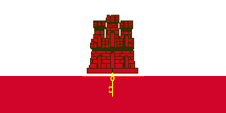
National flag,
ratio = 1:2,
Source, by: Flags of all Nations





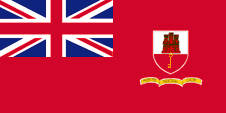
Merchant flag,
ratio = 1:2,
Source, by: Flags of all Nations



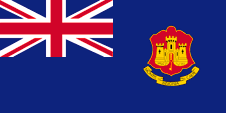
Flag of the government (state flag),
ratio = 1:2,
Source, by: Flags of all Nations



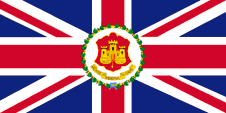
Flag of the Governor,
ratio = 1:2,
Source, by:
Wikipedia (EN)




The national flag of Gibraltar was introduced in 1966 introduced and appears in red and white. The design of the flag is derived from the coat of arms of Gibraltar. The Union Jack in the merchant and state flag of Gibraltar points to the connexions to
United Kingdom. United Kingdom introduced a flag system in 1864 in which:
• war ships fly the "White Ensign" (naval flag), a white flag often with an uninterrupted red St. George's-Cross and with the Union Jack in the upper staff quadrant of the flag,
• merchant ships fly a "Red Ensign" (also named "Civil Ensign" => civil flag, the real merchant flag), a red flag with the Union Jack in the upper staff quadrant of the flag, and
• governmental ships fly the "Blue Ensign" (flag for the use by the gouvernment => the actual state flag), a blue flag with the Union Jack in the upper staff quadrant of the flag.
Since 1865 ships of colonial governments were permitted to fly the Blue Ensign with a badge in the flying end of the flag. The respective governments were asked to design appropriate badges. Merchant ships and seafaring persons from colonies were only permitted to use the Red Ensign with a badge, then also named Civil Ensign, if permission has been given to the respective colony by the British admiralty. Such a badge was often a regional landscape representation placed on a disk, often showing ships, historical events or even a kind of a logo. Very often, a badge also showed the name of the country or a motto. Some British possessions, however, already had a coat of arms from the beginning, or their badge was replaced by a coat of arms over the years. To ensure a uniform appearance in the flying end of the flags, coats of arms and other symbols were displayed on a white disk in the size of the earlier badges. There were also exceptions, because some colonies did not use the white disk and placed their escutcheon or even coat of arms directly on the bunting, sometimes enlarged. Already in the '40s they started to remove the white disk and placed the coat of arms directly or enlarged. This conversion process was done gradually, nowhere at the same time and completely. In some British possessions, flags with the white disc are still in use, in others no more and in some areas are both variants in use, next to each other. The merchant flag shows the traditional, by history passed down coat of arms of Gibraltar, whereas the state flag shows a different variation. Under of both coats of arms a ribbon is displayed with the motto "MONTIS INSIGNIA CALPE", which means something like "The characteristics/landmarks of Mount Calpe". Calpe is the old name of the Rock of Gibraltar. It formed in antiquity with its North African counterpart, Abyla (Apes’ Hill), the "Columns of Melkart/Herakles/Hercules", hence the name, the Strait of Gibraltar. The in the flags used colors are basically subordinated to the correct color representation of the Union Jack and thus correspond to the colors of the flag of the United Kingdom: blue pt 280 c and red pt 186 c.
Source:
Die Welt der Flaggen,
teilweise/partial Jim Watt, Gibraltar, am 31 März 2002


Coat of arms of Gibraltar,
Source, by:
Flags of all Nations

The coat of arms was awarded by document in 1502 to then Spanish Gibraltar. The document read as: "... we grant you as Arms an escutcheon on which two thirds of its upper part shall be a white field, in the said field is set a red castle, and underneath said castle, on the lower third of the escutcheon, which must be a red field, there must be a white line between the castle and said red field; on this field a golden key of the said castle shall hang by a chain." The origin of the castle has its roots in the heraldry of Castile, the most important and largest Spanish region, from which Great Britain acquired Gibraltar in the Spanish War of Succession.
Source:
partial, Jim Watt, Gibraltar, am 31 März 2002

Location:
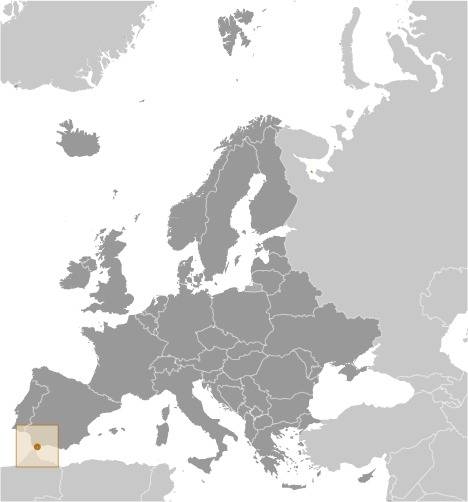
Source: CIA World Factbook
Map of the country:
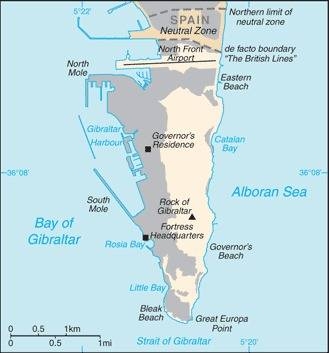
Source: CIA World Factbook

Area: 2,5 square miles
Inhabitants: 34.571 (2017), of which ancestry: 27 % British, 26 % Spanish, 19 % Italian, 11 % Portuguese, 8 % Maltese, 3 % Israeli
Religions: 78 % Catholic, 7 % Anglican, 4 % Muslim, 2 % Jewish, 2 % Hindu
Density of Population: 13.776 inh./sq.mi.
official Language: English
other Languages: Andalusian, Spanish
Currency: Gibraltar Pound (Gibr. £) = 100 Pence
Time Zone: GMT + 1 h
Source:
Wikipedia (D)

1704 · Gibraltar becomes British after the Spanish War of Sucession
1713 · Gibraltar becomes a British crown colony
1964 · United Kingdom grants internal self government
1968 · Gibraltar becomes Dominion
1969 · granting of extended internal self government
1969–1985 · closure of the border to Spain
2002 · referendum, turnout nearly 90 %, 99 % vote to remain under British rule
2009 · first Spanish state visit since 1704 by Foreign Minister Moratinos
Source:
Atlas zur Geschichte,
Discovery '97,
Wikipedia (DE)

The name "Gibraltar" is a shortened abrasion of the Arabic name for the rock. It was originally called "Djebel al Tariq" / "Mount of the Tarik", named after the Arab General Tarik Ibn Ziyad, who landed here in 711 and began with the Arab conquest of the Iberian Peninsula.
Source:
Handbuch der geographischen Namen


![]()
















